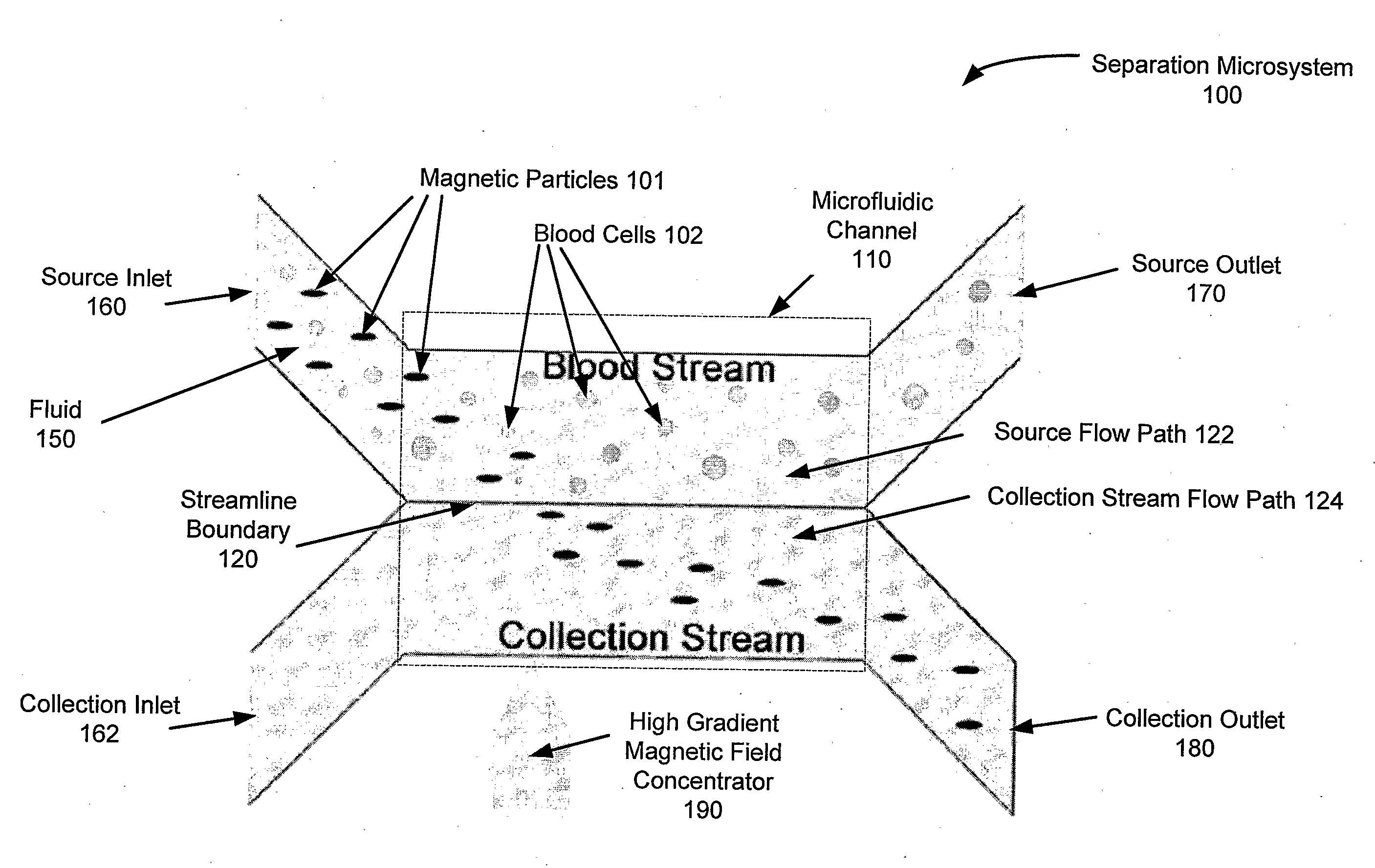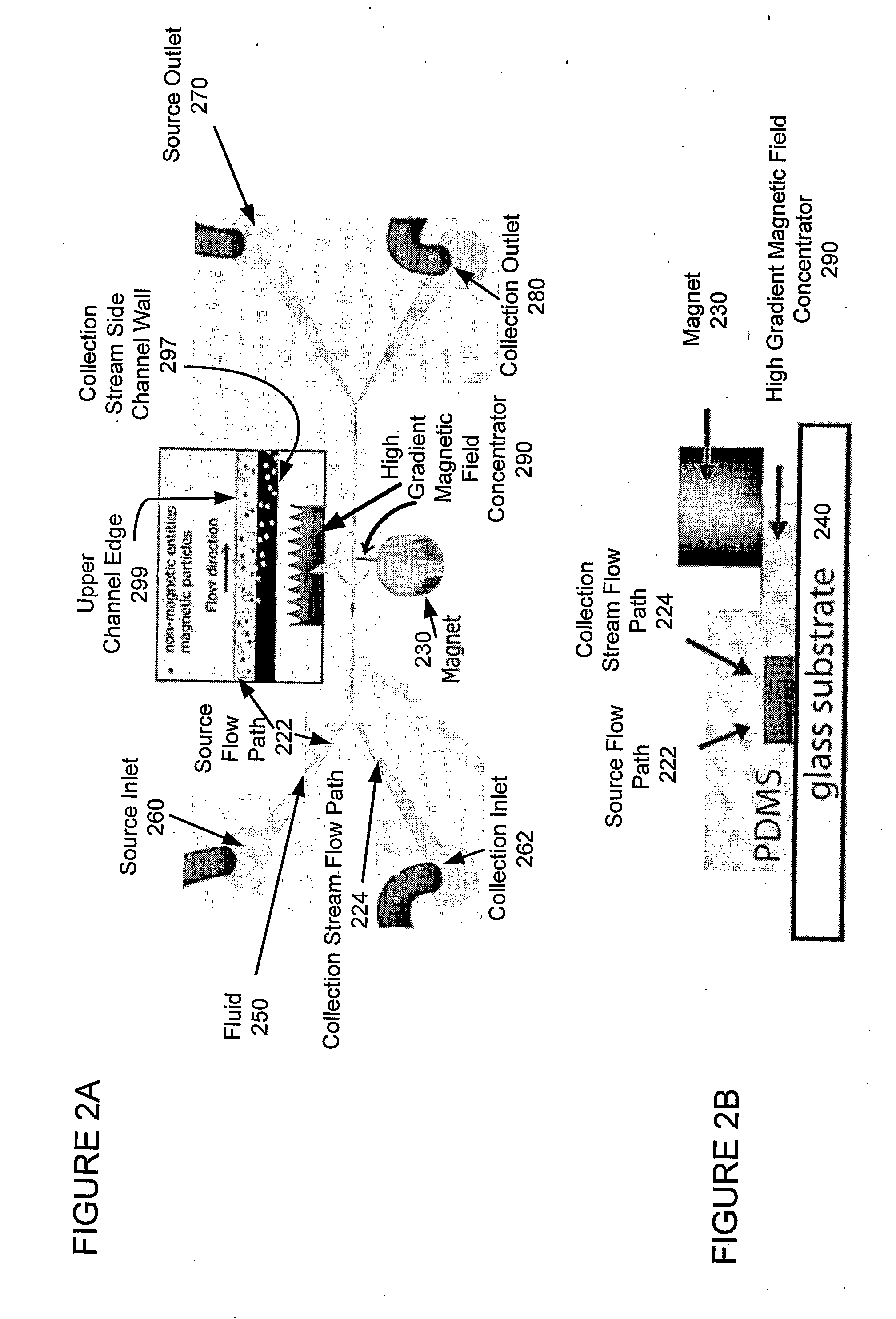Device and method for combined microfluidic-micromagnetic separation of material in continuous flow
a micro-magnetic and material separation technology, applied in the field of systems and methods for separating materials from biological fluids, can solve the problems of affecting the normal functioning of blood cells, so as to minimize the disturbance of normal blood cells
- Summary
- Abstract
- Description
- Claims
- Application Information
AI Technical Summary
Benefits of technology
Problems solved by technology
Method used
Image
Examples
Embodiment Construction
[0015]The following detailed description of the invention refers to the accompanying drawings and to certain embodiments, but the detailed description of the invention does not limit the invention. The scope of the invention is defined by the appended claims and equivalents as it will be apparent to those of skill in the art that various features, variations, and modifications can be included or excluded based upon the requirements of a particular use.
[0016]The present invention extends the functionality of current microfluidic systems techniques to provide on-chip technologies for magnetic separation of living cells from biological fluids such as blood, cerebrospinal fluid, urine, and the like. The present invention combines magnetic and microfluidic separation technologies in continuous flow applications thereby creating effectively unlimited binding and clearance capacity that can be used in portable devices for in-field diagnosis or therapy of diseases, for example, diseases cau...
PUM
 Login to View More
Login to View More Abstract
Description
Claims
Application Information
 Login to View More
Login to View More - R&D
- Intellectual Property
- Life Sciences
- Materials
- Tech Scout
- Unparalleled Data Quality
- Higher Quality Content
- 60% Fewer Hallucinations
Browse by: Latest US Patents, China's latest patents, Technical Efficacy Thesaurus, Application Domain, Technology Topic, Popular Technical Reports.
© 2025 PatSnap. All rights reserved.Legal|Privacy policy|Modern Slavery Act Transparency Statement|Sitemap|About US| Contact US: help@patsnap.com



